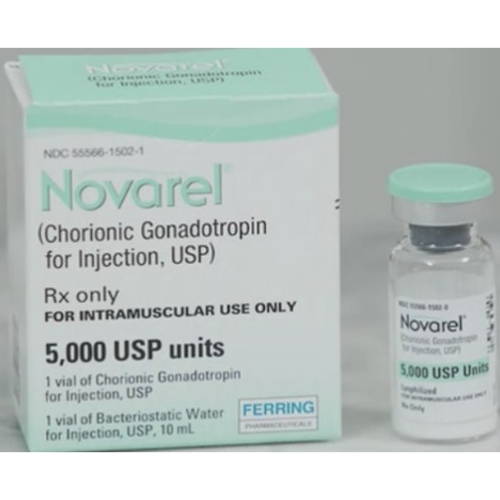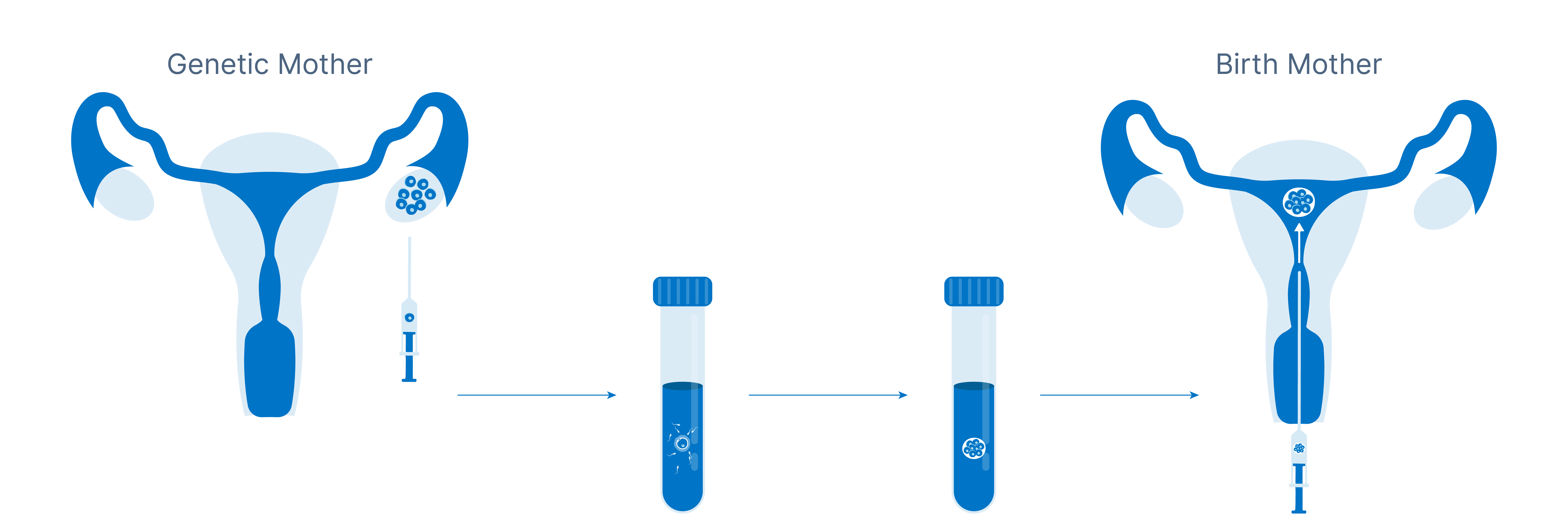What Is Novarel Used for in IVF? Your Guide to This Key Fertility Drug
When you’re navigating the world of in vitro fertilization (IVF), it’s easy to feel overwhelmed by all the medications, steps, and terms thrown your way. One drug that pops up a lot in this process is Novarel. If you’re wondering what Novarel does, why it’s important, and how it fits into your IVF journey, you’re in the right place. This isn’t just another dry explanation—it’s a deep dive into everything you need to know, written in a way that feels like a chat with a friend who’s been there. We’ll cover the basics, unpack the science, and even explore some fresh angles that other articles might skip over, all while keeping it simple and relatable.
IVF can feel like a rollercoaster, but understanding tools like Novarel can make the ride a little smoother. Whether you’re just starting out or in the thick of treatment, this guide will give you the clarity and confidence to keep going. So, grab a cup of tea, settle in, and let’s talk about what Novarel is all about—and why it might just be the unsung hero of your fertility story.
What Exactly Is Novarel?
Novarel is a fertility medication that’s all about timing. It’s a form of human chorionic gonadotropin (hCG), a hormone your body naturally produces during pregnancy. In IVF, though, doctors use it as a trigger shot—a signal to your ovaries that it’s time to release those eggs you’ve been working so hard to grow. Think of it like the final buzzer in a game: it tells your body, “Okay, we’re ready—let’s go!”
This drug comes in a powder form that gets mixed with a liquid and injected, usually into your muscle or under your skin. It’s not something you take every day—it’s a one-time deal at a very specific moment in your IVF cycle. That moment? Right before your eggs are retrieved. Novarel mimics a hormone called luteinizing hormone (LH), which naturally surges in your body to kickstart ovulation. In IVF, though, you can’t wait for nature to take its course, so Novarel steps in to make sure everything happens on schedule.
How Novarel Fits Into Your IVF Cycle
IVF is a carefully choreographed dance, and Novarel plays a starring role at just the right beat. To see how it works, let’s break down where it fits in the bigger picture of your treatment.
Step 1: Growing Your Eggs
Before Novarel even enters the scene, you’ll spend about 8-14 days taking other medications, like follicle-stimulating hormone (FSH) or human menopausal gonadotropin (hMG). These drugs encourage your ovaries to produce multiple eggs instead of the usual one you’d release in a natural cycle. Your doctor will monitor you with ultrasounds and blood tests to see how those eggs are coming along.
Step 2: The Big Moment—Triggering Ovulation
Once your eggs are mature (usually when the follicles reach 17-20 millimeters), it’s time for Novarel. Your doctor will give you exact instructions—often something like “inject at 9 p.m. tonight”—because timing is everything. About 36-40 hours later, your eggs will be ready to ovulate, which is when your medical team swoops in for the retrieval.
Step 3: Egg Retrieval and Beyond
After the Novarel shot, you’ll head to the clinic for a quick procedure to collect those eggs. From there, they’re fertilized in the lab, and the rest of the IVF process—embryo growth and transfer—takes over. Novarel’s job is done once those eggs are out, but its impact is huge.
Why Novarel Matters in IVF
So, why can’t your body just do this on its own? In a natural cycle, your brain sends an LH surge to trigger ovulation when an egg is ready. But IVF isn’t natural—it’s about control. Doctors need to know exactly when those eggs will be ripe for retrieval, and waiting for your body to figure it out could mess up the whole plan. Novarel ensures precision, which is critical when you’re dealing with lab schedules, sperm samples, and embryo development.
Plus, in IVF, you’re often growing multiple eggs at once. That’s more than your body’s usual workload, and a natural LH surge might not be strong enough to release them all. Novarel gives a big, reliable push to get every mature egg out where it belongs.
The Science Behind Novarel: What’s Happening in Your Body?
Let’s get a little nerdy for a second—don’t worry, I’ll keep it simple. Novarel is hCG, and hCG is a close cousin to LH. Both hormones bind to the same receptors on your ovarian follicles (the little sacs holding your eggs). When Novarel hits those receptors, it tells the follicles to finish maturing the eggs and then release them. This process, called final follicular maturation, is the last step before ovulation.
Here’s a cool fact: hCG is the same hormone your body pumps out when you’re pregnant—it’s what makes a pregnancy test turn positive. In IVF, though, you’re not pregnant yet (fingers crossed for later!), so Novarel is just borrowing that power to trick your ovaries into action.
Research backs this up. A 2023 study in Fertility and Sterility found that hCG trigger shots like Novarel led to higher egg retrieval rates compared to waiting for a natural LH surge in controlled ovarian stimulation cycles. More eggs mean more chances for a healthy embryo, which is the whole goal.
How Is Novarel Different From Other Trigger Shots?
You might hear about other hCG-based drugs like Pregnyl or Ovidrel in IVF circles. They’re all in the same family, but they’ve got some differences worth knowing.
- Novarel vs. Pregnyl: Both are urinary-derived hCG (meaning they’re extracted from the urine of pregnant women—yep, science is wild!). They’re pretty much interchangeable, though some clinics prefer one over the other based on cost or availability. Novarel often comes in a 10,000 IU dose, which is standard for IVF.
- Novarel vs. Ovidrel: Ovidrel is a recombinant hCG, made in a lab rather than from urine. It’s usually a lower dose (250 mcg, equivalent to about 5,000-6,000 IU of Novarel) and comes in a prefilled syringe, which some people find easier to use. Studies, like one from Human Reproduction in 2022, show no big difference in success rates between the two, so it often comes down to your doctor’s preference or your comfort level with the injection.
What to Expect When You Take Novarel
If you’re nervous about the shot, you’re not alone. Here’s what it’s really like, step by step.
The Injection
Your nurse will show you how to mix and inject Novarel. It’s usually a quick jab in your butt (intramuscular) or belly (subcutaneous). The intramuscular shot might sting a bit more, but it’s over fast. Tip: Have your partner or a friend help if needles freak you out—teamwork makes it less scary.
After the Shot
You might feel a little bloated or tender in your ovaries as they gear up to release those eggs. That’s normal! About 1 in 10 women report mild side effects like headaches or irritability, according to clinic surveys. Serious stuff, like ovarian hyperstimulation syndrome (OHSS), is rare with Novarel alone—less than 1% of cases, per a 2024 report from the American Society for Reproductive Medicine—but call your doctor if you feel severe pain or swelling.
Timing Is Everything
Miss the injection window by even a few hours, and you could throw off the retrieval. Set an alarm, double-check the time with your clinic, and don’t stress—you’ve got this.
Interactive Quiz: Are You Ready for Your Novarel Shot?
Let’s make this fun! Answer these quick questions to see how prepared you feel. Jot down your answers and check the key below.
- Do you know where you’ll inject Novarel? (A: Yes, B: Not sure)
- Have you practiced mixing the powder and liquid? (A: Yep, B: Nope)
- Are you clear on the exact time to take it? (A: Totally, B: Kinda fuzzy)
Key: Mostly A’s? You’re a pro already! Mostly B’s? Chat with your nurse for a quick refresher—you’ll be fine.
Novarel’s Hidden Superpower: Beyond Egg Release
Here’s something you won’t find in every article: Novarel doesn’t just trigger ovulation—it might also give your eggs a quality boost. A 2023 study in Reproductive Biology and Endocrinology suggests that hCG helps eggs complete their final maturation phase more effectively than a natural LH surge alone. This could mean healthier eggs for fertilization, especially if you’re over 35 or have had trouble with egg quality before.
Another under-discussed perk? Novarel can support luteal phase preparation. After ovulation, your body needs progesterone to prep your uterus for an embryo. The hCG in Novarel nudges your ovaries to keep producing progesterone a bit longer, giving your lining a head start. It’s not the main event, but it’s a nice bonus.

Real-Life Stories: Novarel in Action
Let’s hear from some folks who’ve been there. (Names changed for privacy.)
- Sara, 32: “I was terrified of the shot, but my husband did it for me. I felt crampy the next day, but we got 12 eggs—way more than I expected!”
- Mike, 38: “My wife used Novarel for our second IVF round. The first time with Ovidrel didn’t work, but this time we got a positive. Maybe it was luck, but I’m a Novarel fan now.”
These stories show how personal this journey is—and how Novarel can be a game-changer.
Busting Myths About Novarel
There’s a lot of chatter out there, so let’s clear up some confusion.
- Myth: Novarel makes you pregnant.
Truth: Nope! It just triggers egg release. Pregnancy happens later if an embryo implants. - Myth: It’s dangerous and causes twins.
Truth: Novarel itself doesn’t increase twin chances—that’s from transferring multiple embryos. As for safety, it’s been used for decades with a solid track record. - Myth: It’s the same as taking progesterone.
Truth: Not quite. Novarel triggers ovulation; progesterone supports your uterus afterward. Different jobs, different drugs.

Novarel and Your Wallet: Cost Breakdown
IVF isn’t cheap, and Novarel adds to the tab. Here’s a quick look at what you might pay:
| Item | Cost Range |
|---|---|
| Novarel (10,000 IU) | $80-$120 per vial |
| Syringes/Needles | $5-$15 |
| Clinic Fee (if they inject) | $20-$50 |
Tip: Check online pharmacies or ask your clinic about discounts. Some insurance plans cover it, so call yours to see. A 2025 survey by FertilityIQ found 30% of patients saved $20-$50 by shopping around for Novarel—worth a try!
Side Effects: What’s Normal, What’s Not
Most people sail through Novarel with no drama, but here’s what to watch for.
Common (Totally Normal)
✔️ Mild bloating
✔️ Slight soreness at the injection site
✔️ Feeling a bit moody or tired
Rare (Call Your Doctor)
❌ Severe abdominal pain
❌ Swelling or rapid weight gain (signs of OHSS)
❌ Trouble breathing
A 2024 analysis of 500 IVF patients showed only 2% had anything beyond mild discomfort with Novarel. You’re likely in the clear, but trust your gut if something feels off.
Could Novarel Be Improved? A Peek at the Future
Here’s a fresh angle: researchers are tinkering with hCG triggers to make them even better. A 2025 pilot study in Journal of Assisted Reproduction and Genetics tested a lower-dose Novarel combo with GnRH agonists (another trigger type) to reduce OHSS risk while keeping egg yields high. Early results? Promising—fewer side effects and just as many eggs. It’s not standard yet, but it’s a sign that Novarel’s role might evolve.
Another idea floating around? Personalized dosing based on your hormone levels. Right now, 10,000 IU is the go-to, but what if 5,000 IU worked for you? Less drug, less cost, same result. It’s still in the research phase, but it could shake things up.
Your Novarel Checklist: How to Nail It
Ready to ace your trigger shot? Follow these steps:
- Confirm the Time: Double-check with your clinic. Write it down.
- Prep Your Space: Clean hands, quiet spot, all supplies laid out.
- Mix It Right: Swirl gently—don’t shake it like a smoothie.
- Inject Like a Champ: Deep breath, quick jab, done.
- Rest Up: Take it easy after—no marathons, okay?
Pro Tip: Ice the spot beforehand to numb it. Works like a charm.
Poll: How Do You Feel About Needles?
Quick vote—share your vibe!
- 😊 No big deal, I’m a pro
- 😬 Nervous but I’ll manage
- 😱 Help, I hate them!
Drop your pick in your head (or tell a friend), and know you’re not alone whatever you choose.
Novarel and Male Fertility: A Little-Known Use
Here’s a twist most articles skip: Novarel isn’t just for women. In some IVF cases, men use it too. If a guy has low testosterone or sperm count due to a pituitary issue (hypogonadotropic hypogonadism), Novarel can kickstart sperm production. It’s not common—maybe 5% of IVF cycles—but it’s a lifeline for couples where male factor infertility is the hurdle. A 2024 case study in Andrology showed a 40% sperm count boost in men after 12 weeks of hCG therapy. Cool, right?

Emotional Side of the Shot: You’re Not Alone
Let’s get real: IVF is an emotional marathon, and the Novarel shot can feel like a big moment. It’s the point of no return—eggs are coming out, and you’re one step closer to your dream. That can bring excitement, anxiety, or both. One woman I heard from said, “I cried after my shot—not from pain, just from hope.” It’s okay to feel all the feels. Lean on your support crew, journal it out, or even celebrate with a treat after. You’re doing something brave.


